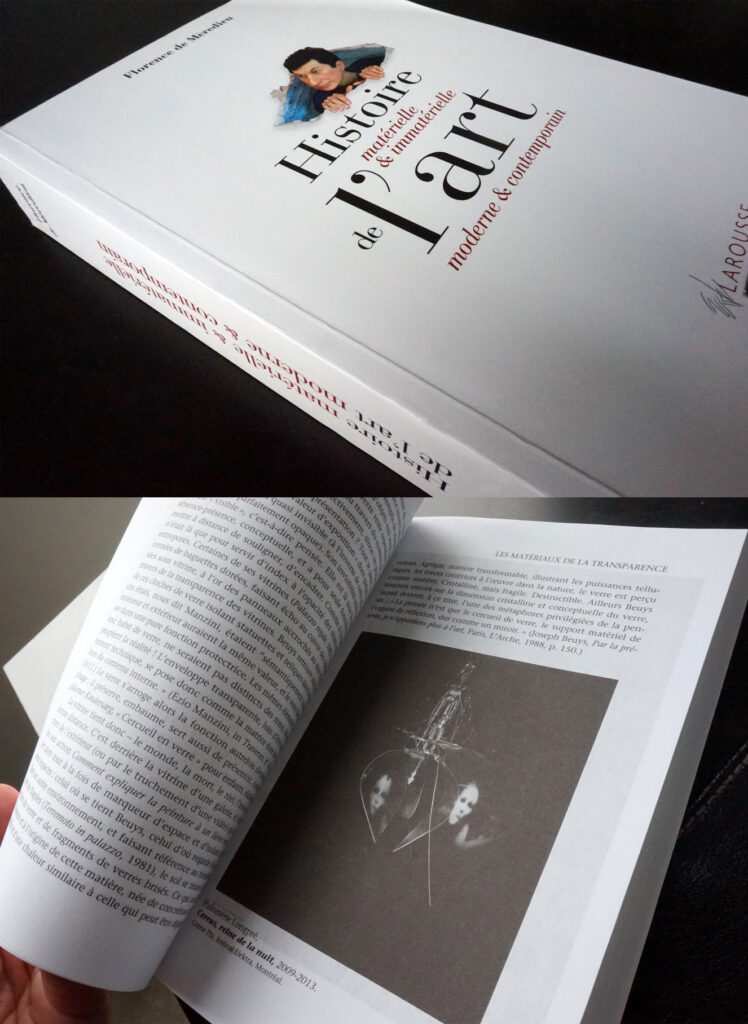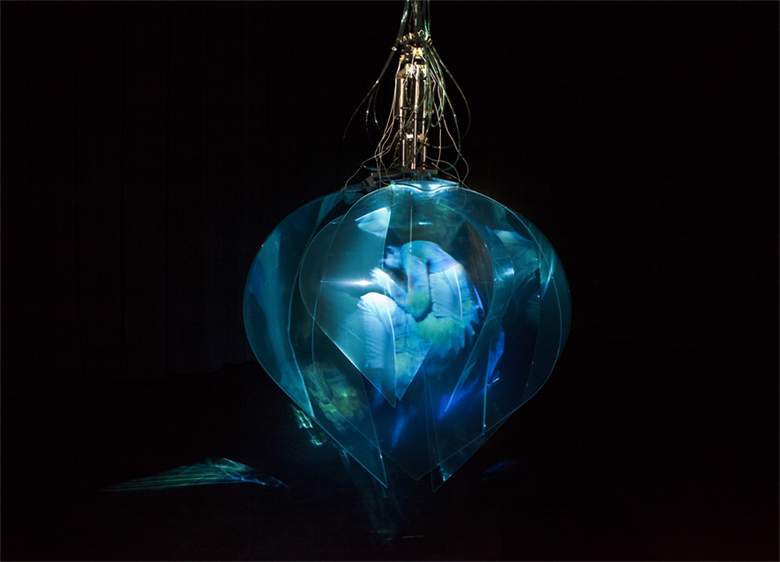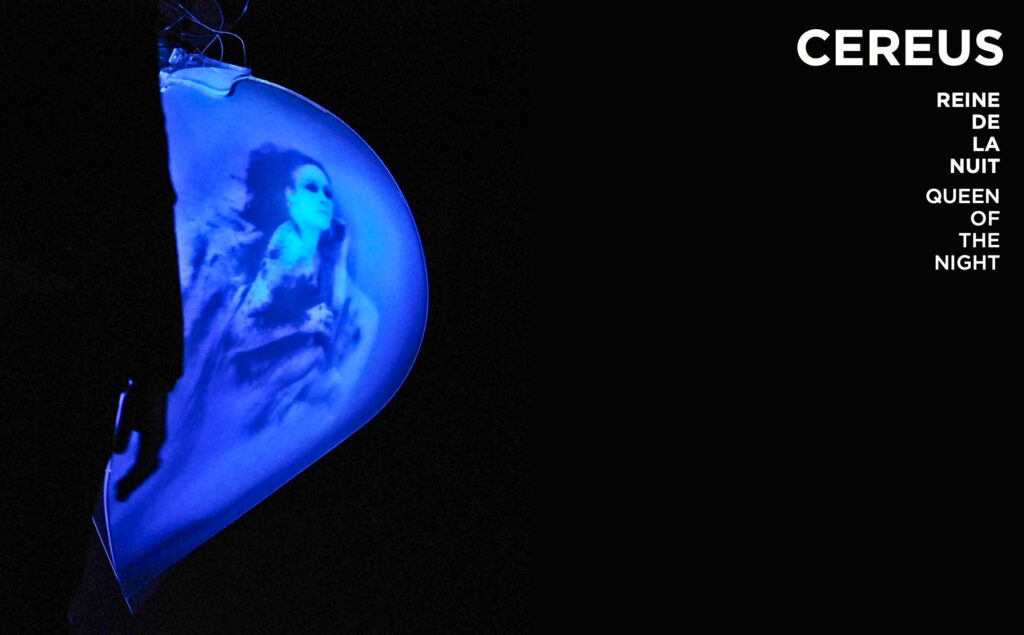
CEREUS, QUEEN OF THE NIGHT, Responsive Art System. A responsive video membrane constitutes both the screen of the moving images as well as the heart of Cereus System. Suspended in space, the membrane lives, responds and transforms under the influence of changes that take place in its environment. Thus, the transformation of the space reverberates within Cereus. “As the painters of the Renaissance and their successors searched for techniques to overcome and transcend the re presentational system and as Yves Klein studied the saturation of the color blue to achieve a feeling of pure space, Philomène Longpré broadens the scope of possibilities. Cereus’ system offers a multisensory experience based on the specific use of a one-of-a-kind video membrane.” — Guillaume Evrard
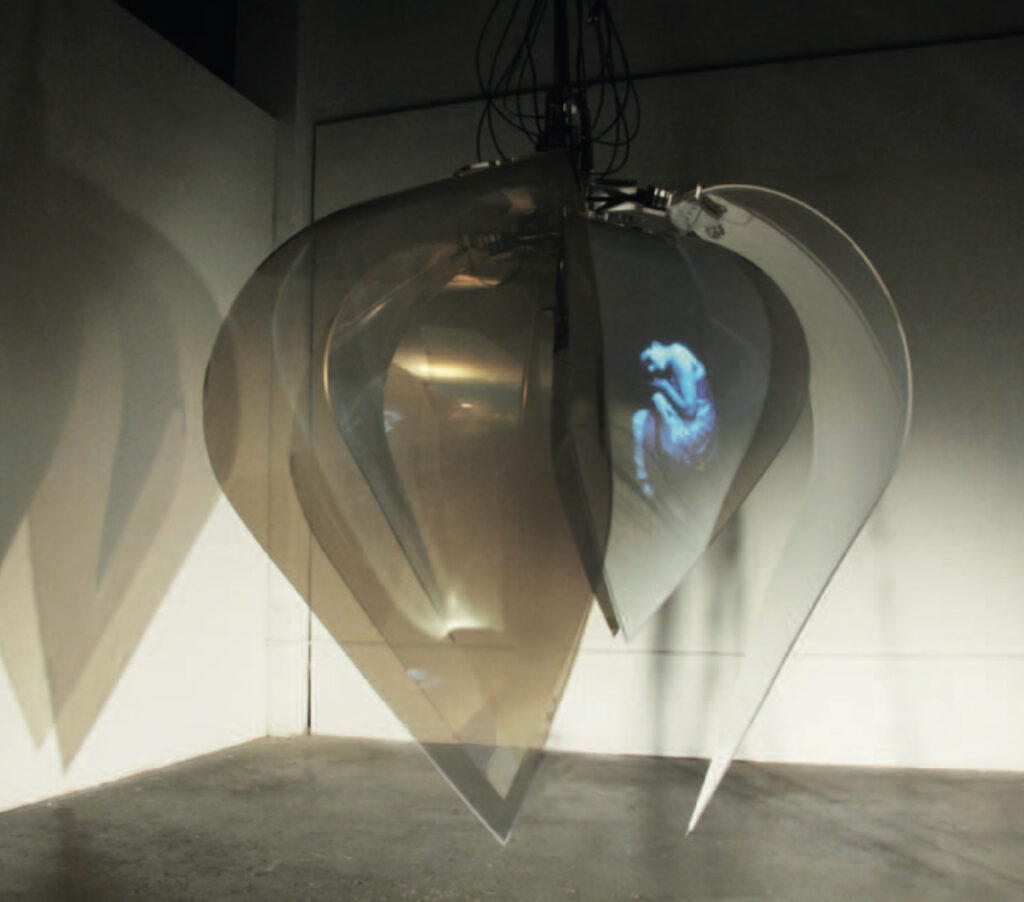

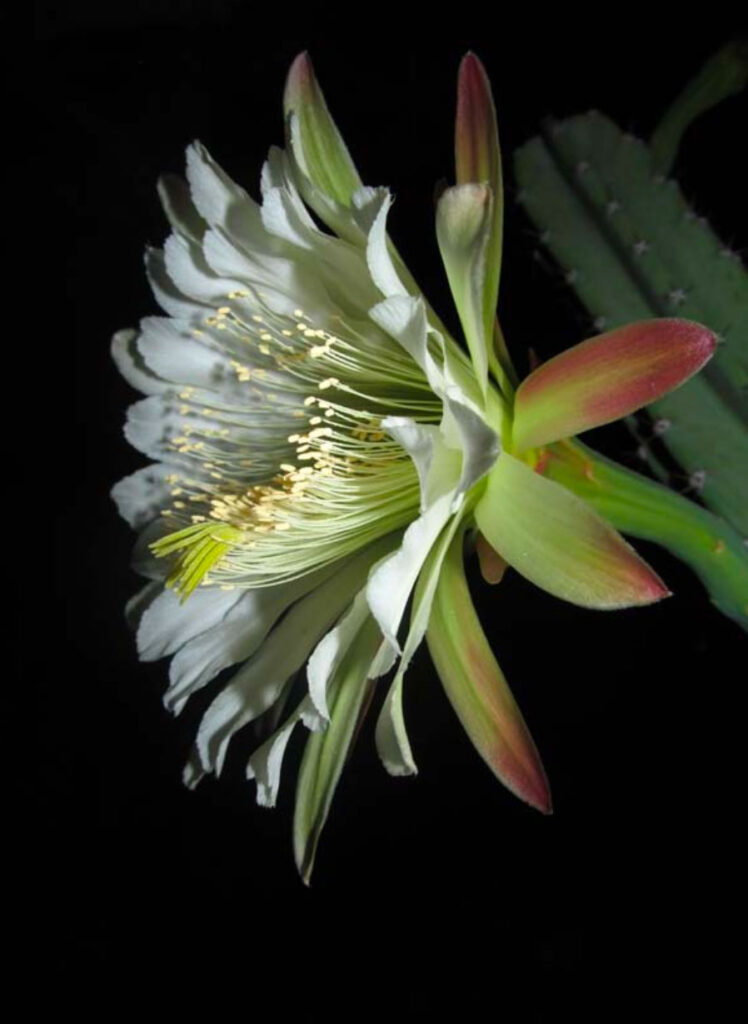
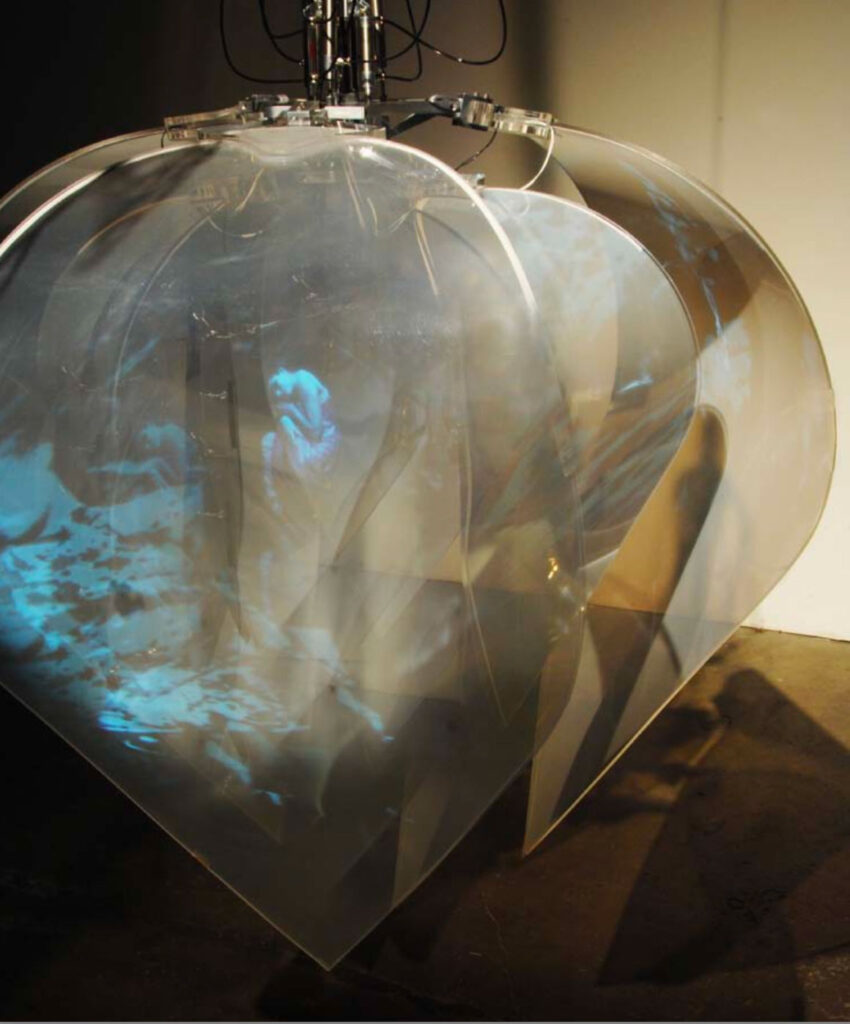
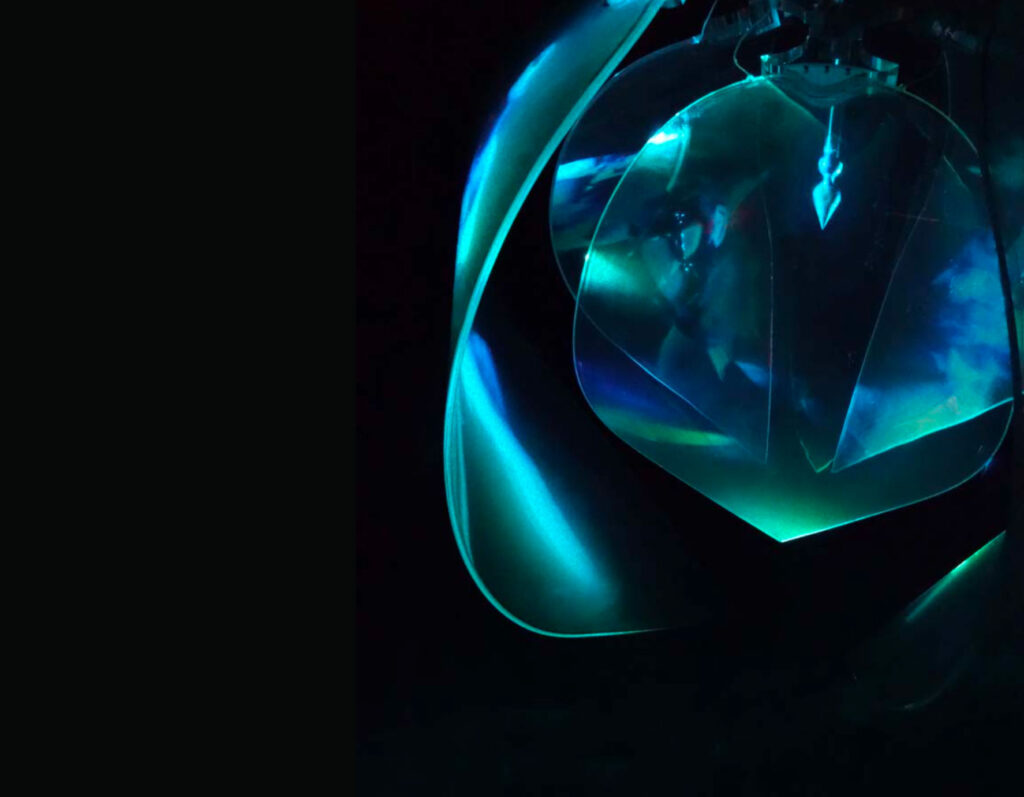
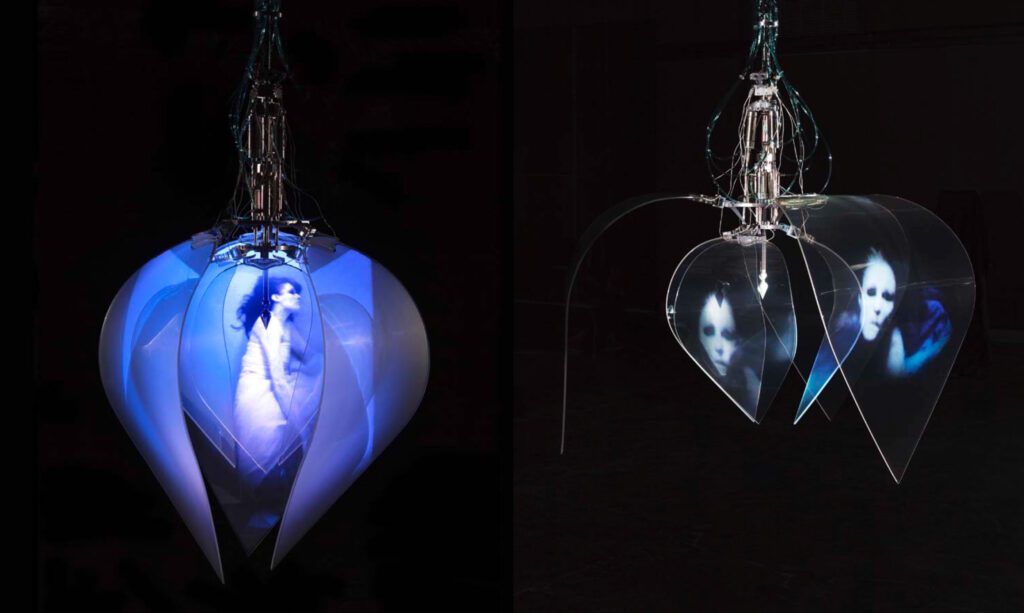
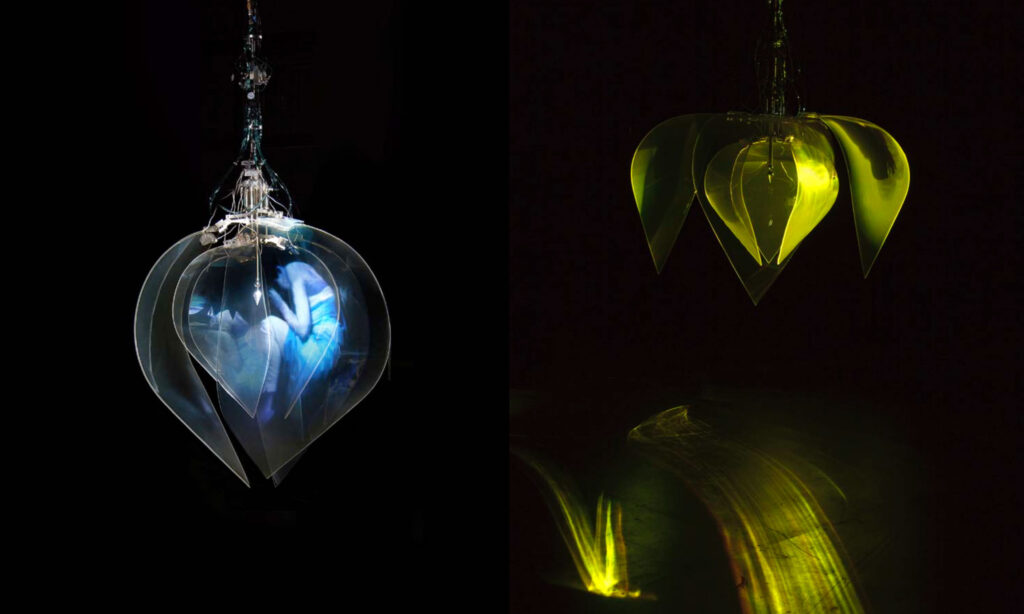
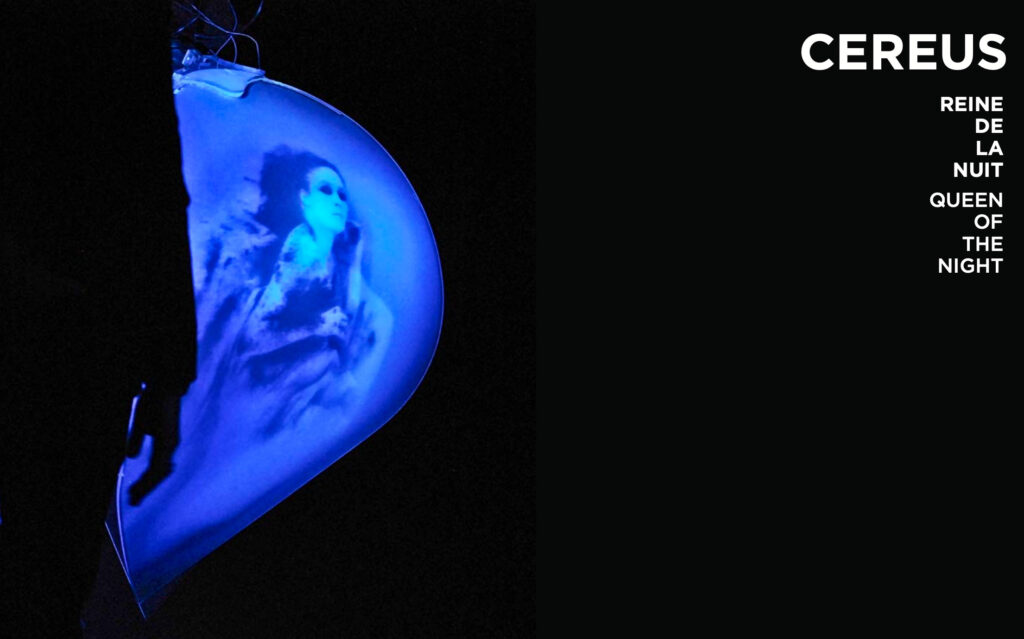
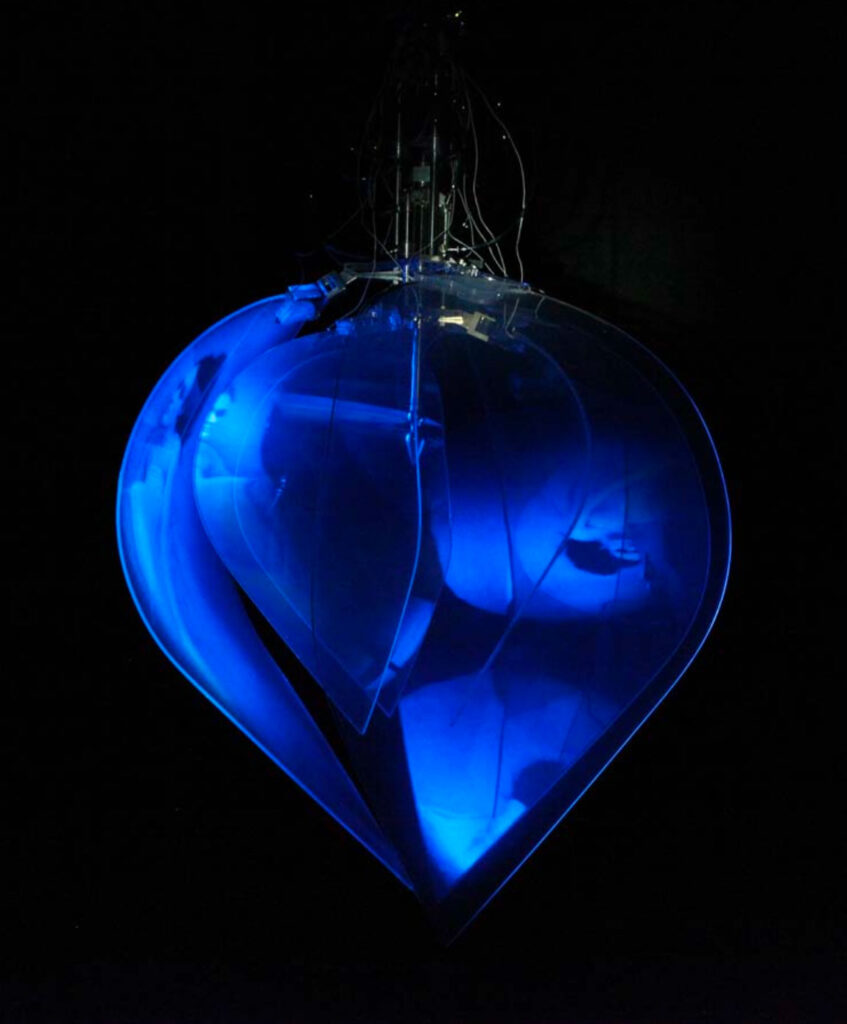
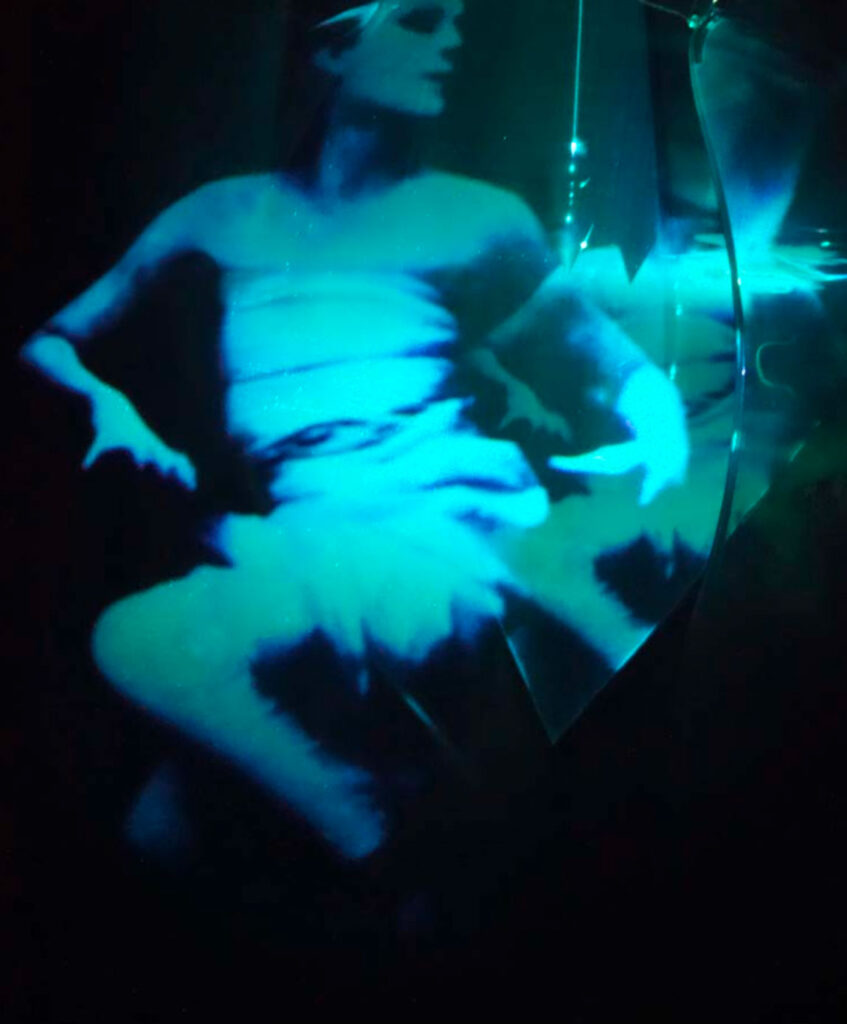
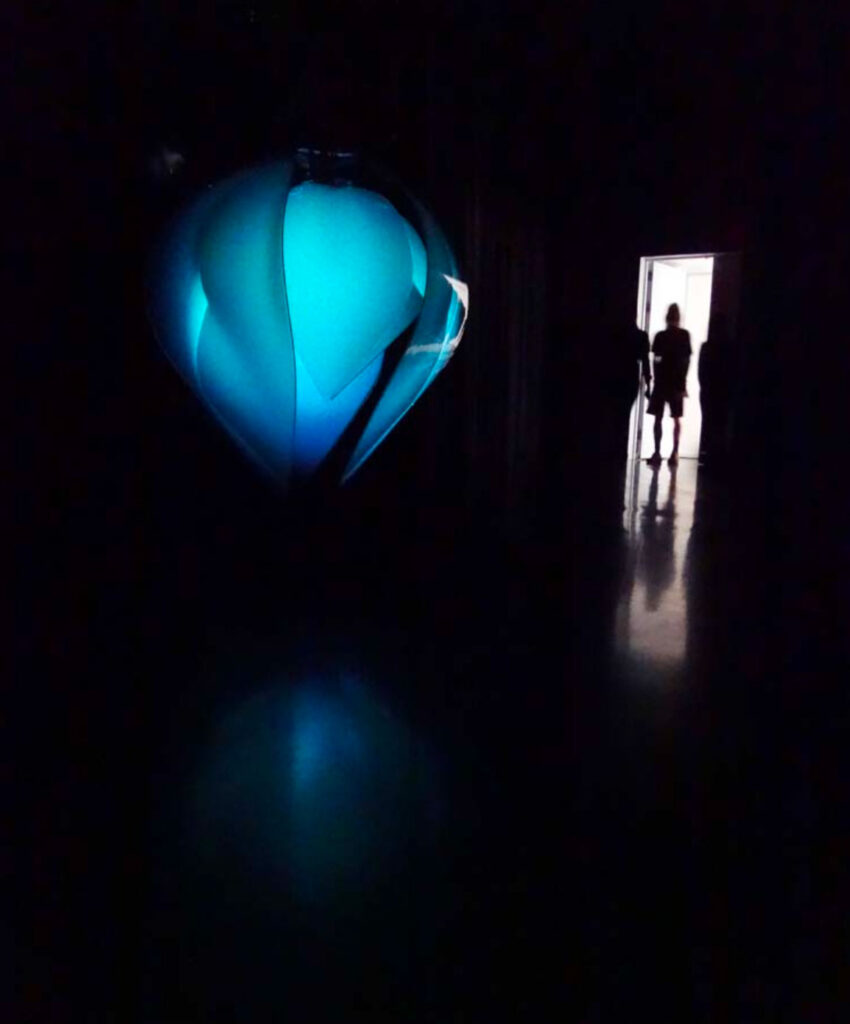
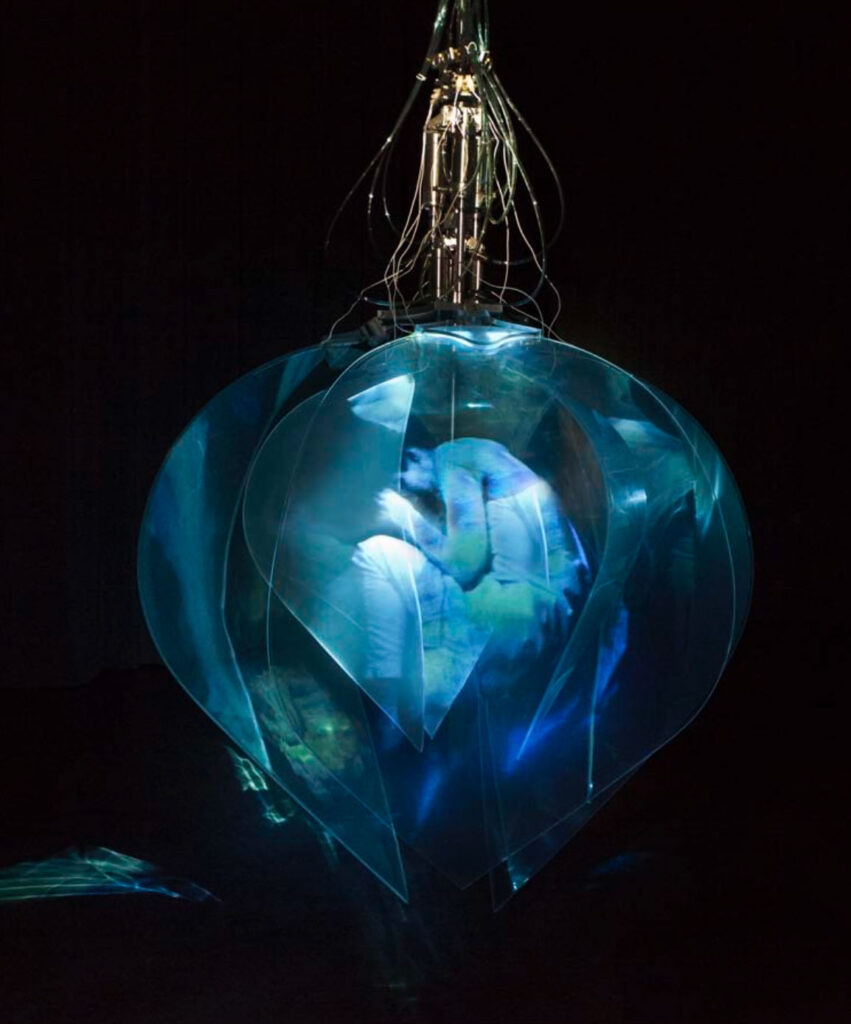
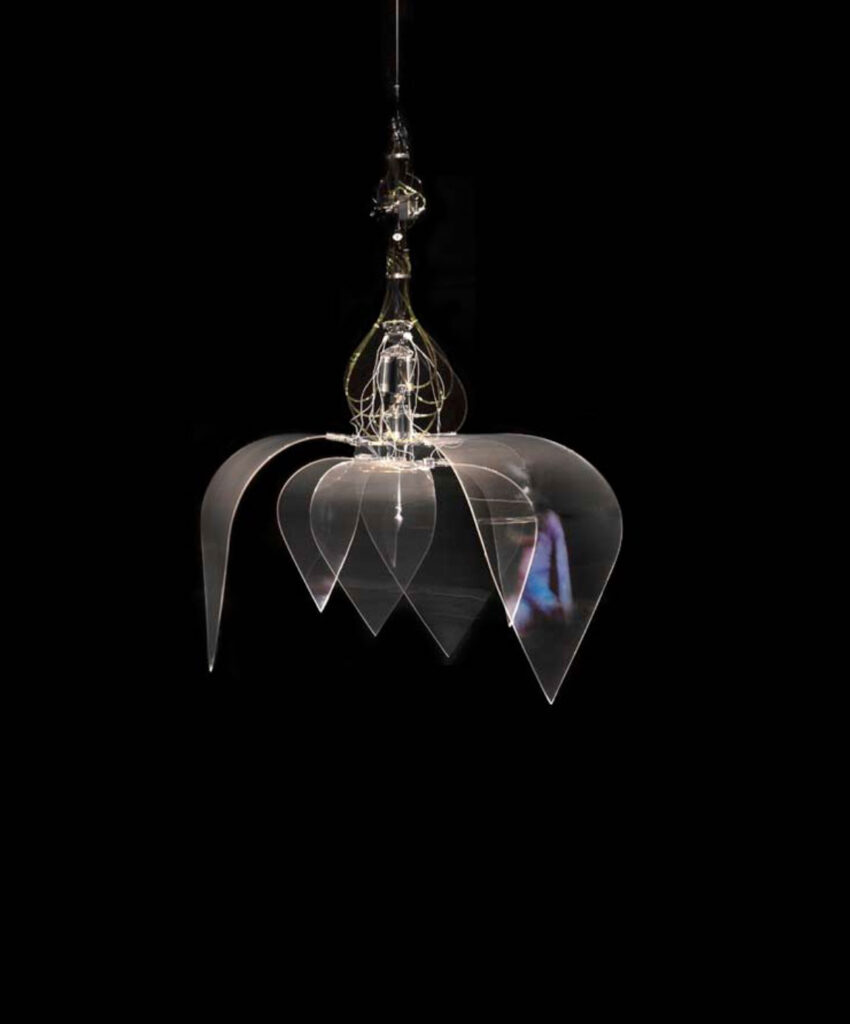
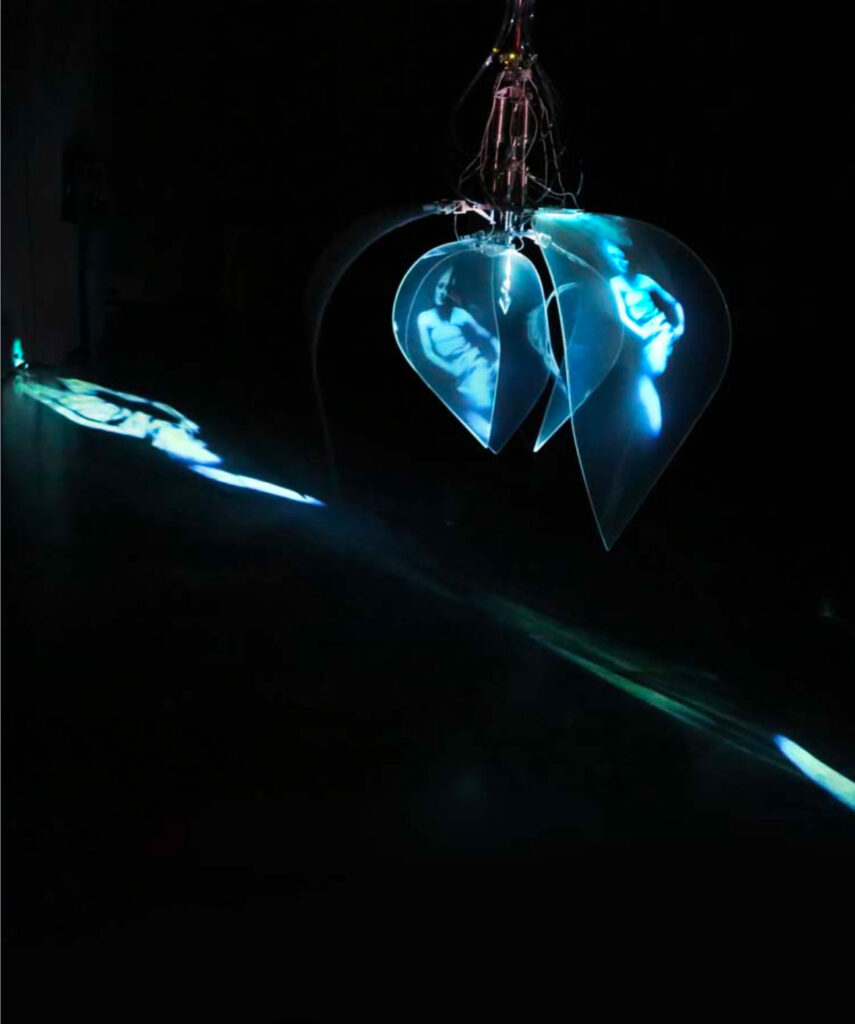
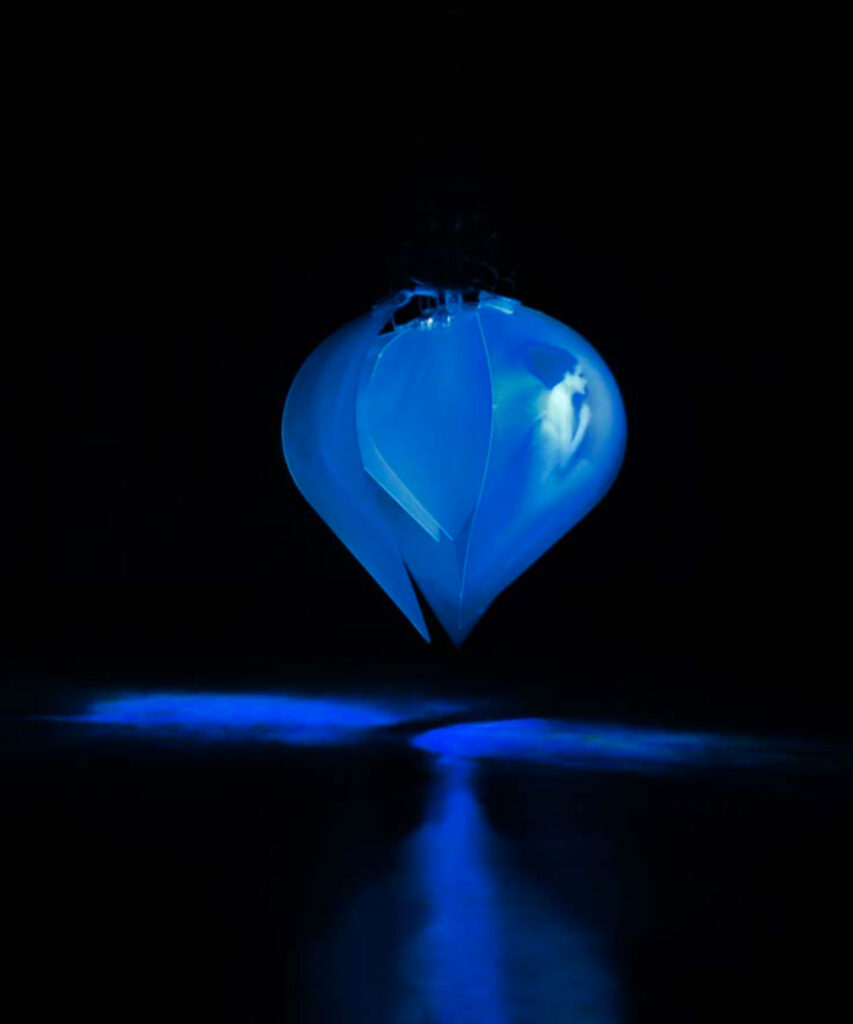
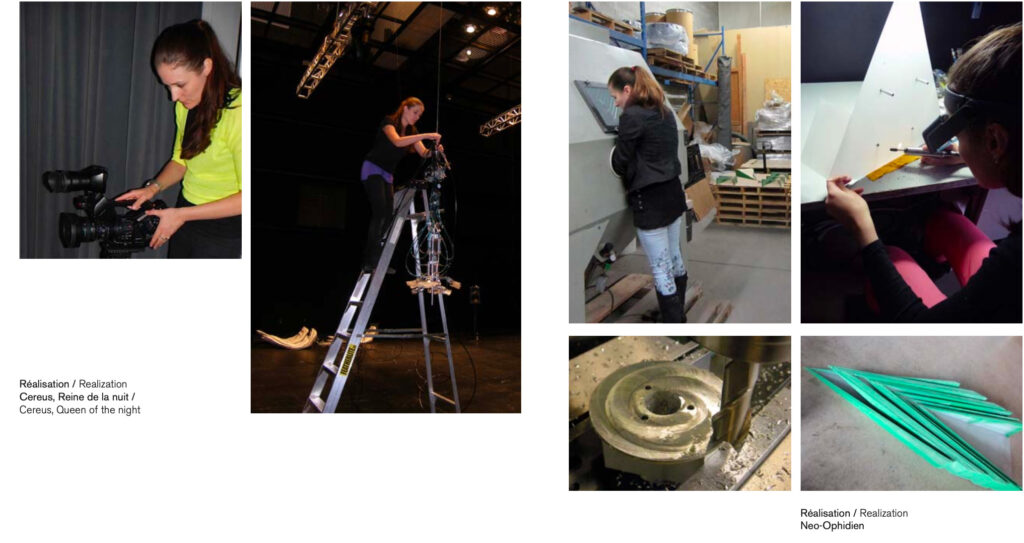









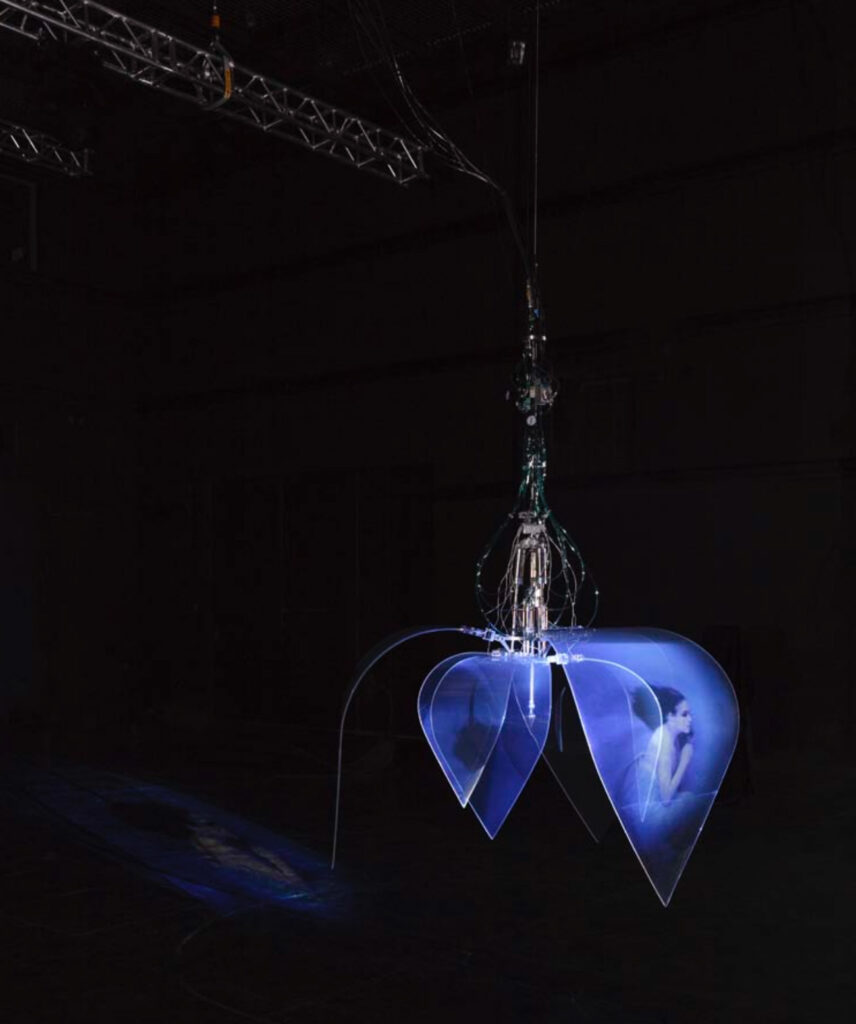
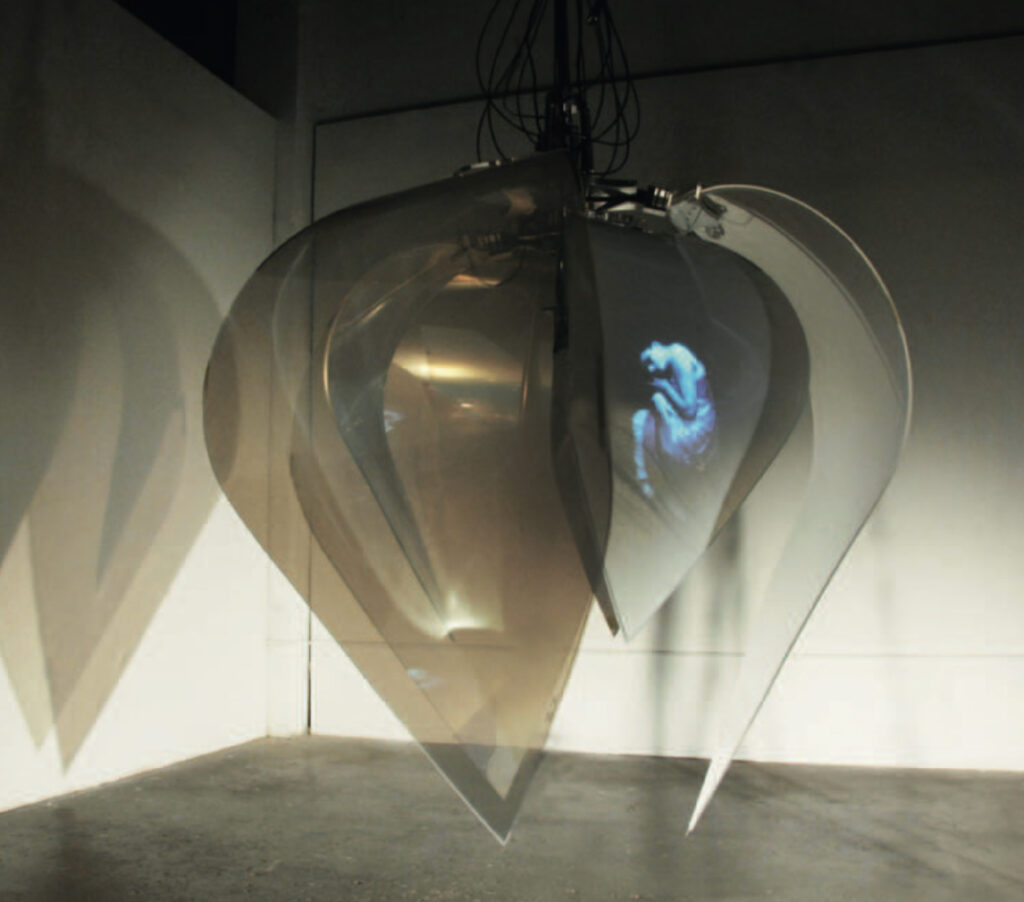
CEREUS, Queen of the Night
Philomène Longpré‘s Interactive Video System
by Guillaume Evrard
Over two hundred years ago, in his publication Species plantarum, the Swedish naturalist Linnaeus described for the first time the Selenicereus grandiflorus. Today, the artistic commitment of Philomène Longpré refreshes this spirit of humanityʼs proclivity to explore the unknown and the mysterious, by pushing the limits of the artistic, physical and visual. The flower of the Selenicereus grandiflorus blossoms during the night: vanilla, sweet, and colorful. She becomes the queen; white, bright, orange, lemon, rose, attractive. Fresh and alive, thriving in the midst of thorns in the vast desert. The butterfly sphinx relays the victory of lightness upon gravity, drawn by the fragrance of the triumphant flower during its nocturnal flight. The ephemeral queen quickly succumbs to the force of attraction that connects us all to the ground that bears her presence.
The imperative constraint of the field of gravity on the human condition and its environment stimulates the philosophy behind Philomène Longprés interactive video system Cereus. It
renews the iconography of a theme that has preoccupied mankind since its earliest days, from the Antique myth of Icarus to the dream of levitation by French artist Yves Klein. In the 16th century, Peter Bruegel depicts the fall of Icarus as he sank into the sea, his wings plucked, while the farmer ploughs his field. This iconography teaches the lesson of modesty: gravity, unavoidable. Beyond the seasons – of humankind and the universe, fertile seed in the furrow, indifferent. The relationship between body and space, lightness and emptiness, fascinated Klein, who rushes into the void in 1960: weightlessness, thinkable. The boldness of the mythological hero finds his equal in the technological ambition of Philomène, dealing with intricate computer programming and techniques of her video system, a conceptual labyrinth whose enigma she had to solve. The sail of Daedalus boat, floating and vibrant, is mysteriously duplicated in the interactive membrane of Cereus.
Beyond the artistic and physical limits, Cereus explores the visual limitations of our
contemporary society in a subversive spirit related to the Lettrism movement. Message and
media re-appropriated, Cereus questions the role of the screen, its operation and its purpose:
Is it just a showcase? For whom and why? Is it an interface to exchange, to communicate?
What is the content? The goal?
Faithful to the Lettrist reassessment of cinematic established conventions, Philomène
Longpré takes risks by redefining the answers to these questions.
As we enter each moment of this work in action – rather than on display, it is the spectator
who must take risks in order to make the most out of the system.
Digital interface, virtual character, robotic video membranes and abstract sounds from field
recordings of nature envelope the viewer completely, as they become unwitting actors by
their own presence. The stems of the Selenicereus grandiflorus develop into mechanism, cables
and tubes, while the petals become sensitive membrane. Reproducing the movement of the
nocturnal curiosity of the sphinx butterfly, the spectators are visitors, attracted by the
luminous night of Cereus.
The replication of the natural phenomenon enables the Cereus system to touch the limits of
the visual experience. The sphinx sees the flower as taking up ownership and behaves in
ways to transform its existence. The viewer sees the technical interfaces necessary for the
robotic system to function and interferes in its development: the work blooms without a
hitch and the precise distinction between its being and the spectator disappears beyond the
sensitive membrane to involve the visitor in its organic development.
As the painters of the Renaissance and their successors were searching techniques to
overcome their condition and transcend the representational system at their disposal, as
Klein was studying the saturation of the color blue to achieve the representation of pure
space, Philomène Longpré broadens the scope of possibilities. After the wall, panel, canvas,
cinema screens and television, her system could be the origin of a new medium. It offers a
multi-sensory experience based on the specific use of a new sensitive membrane that
responds to movements of a virtual character as well as the visitors through a complex set of
sensors and reactive pistons meticulously positioned.
Cereus defies the constraints of the terrestrial gravity field, when it occurs, between heaven
and earth, between life and death, between light and darkness.
Guillaume Evrard
Translation: Ken Weinstein
Biographical notes
Art historian, Guillaume Evrard has published several articles on the Relationship between visual
arts, architecture and politics, especially in the context of universal and international exhibitions of
the nineteenth and twentieth centuries.
Technique
CEREUS, Queen of the Night — Interactive Robotic Installation
(Immersive environment, responsive video membrane, robotic sculpture,
interactive narrative, sensing and control system, user interface design, large scale video projection,
virtual character, and digital sound)
CEREUS, Queen of the Night System comprised a responsive video membrane specially constructed to respond both physically and conceptually to the moving images as their format, shape, material, mechanism, setting, and colors were chosen in direct relation to the properties of its content. It implied the design of a novel medium composed of 4 laminated layers of films allowing it materiality to change from opaque to transparent, while capturing projected images still in its optically clear state and also, mutates its shape by physically opening and closing controlled by a pneumatically driven robotic structure. The perfomative aspect of this project is extremely important. For a period of six months, I first studied how the body reacts in a zero gravity environment to create a sense of weightlessness. I performed a series of movements in different settings with a green screen background, while attached with a harness or jumping on a trampoline. All of these processes question the constraint of the gravitational pulls that occur on the body. Research also implies how visitors might themselves experience the feeling of Weightlessness by interacting with the moving images of this floating character projected on the suspended structure.

Exhibitions
CEREUS, Queen of the night
Centre PHI, ELEKTRA Festival. Montreal, Canada
Curator: Christine Redfern
May 1-18, 2013
Visualizing Media Futures Symposium
Swarthmore College, PA, USA
March 21-23, 2013
CEREUS, Queen of the Night
Hexagram-Concordia, Black Box. Montreal, Canada
Oct. 1-6, 2012
Reviews
- Arts numériques – Elektra 14, immatériel et musical, Jérôme Delgado, Le Devoir, Actualités culturelles, April 29, 2013 http://www.ledevoir.com/galeries-photos/arts-numeriques-elektra-14-immateriel-et-musical/110452
- Philomène Longpré’s Queen of the Night, Rachel Levine, CULT Montreal, May 2, 2013
http://cultmontreal.com/2013/05/philomene-longpre-cereus-queen-of-the-night-montreal-art-shows-phi-centre/ - Philomène Longpré dévoile les secrets de Cereus, Marie-Hélène Brousseau, Lien Multimedias, May 8, 2013
http://www.lienmultimedia.com/spip.php?article36274 -
Cereus Responsive System by Philomene Longpre, PULP Magazine, May 19, 2013
http://pulp-magazine.com/2013/05/cereus-responsive-system-by-philomene-longpre/ - Cereus- Queen of the Night. Evrard, Guillaume. France, 2011.
